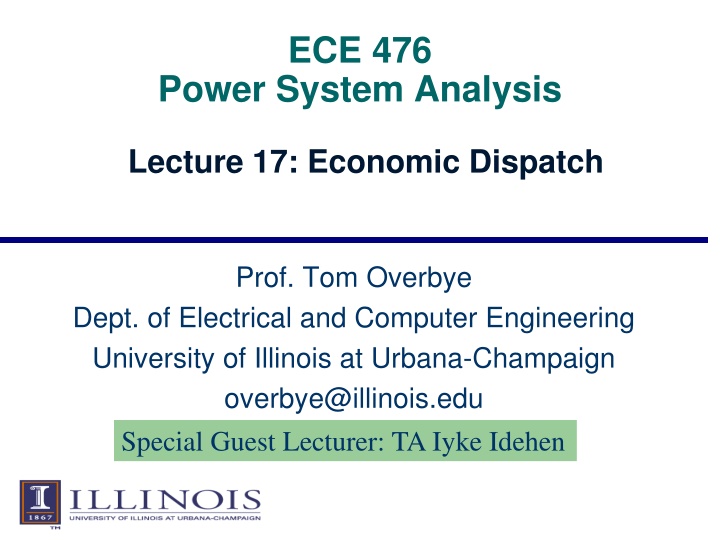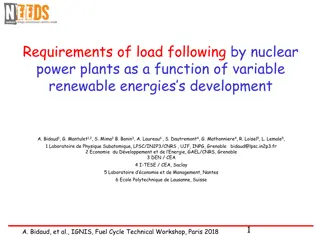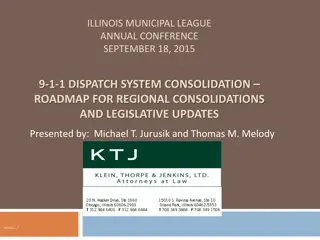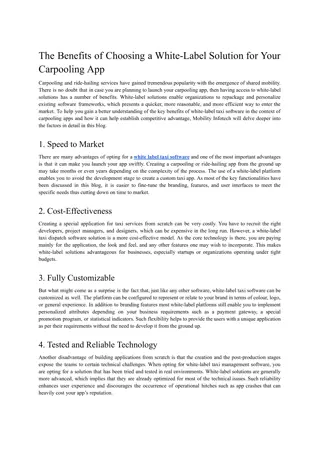Economic Dispatch in Power Systems
Dive into the intricacies of economic dispatch in power systems with a focus on gas turbines, combined cycle power plants, generator cost curves, and mathematical formulations. Explore concepts such as efficiency, fuel types, cost curves, and mathematical representations of generator costs.
Download Presentation

Please find below an Image/Link to download the presentation.
The content on the website is provided AS IS for your information and personal use only. It may not be sold, licensed, or shared on other websites without obtaining consent from the author.If you encounter any issues during the download, it is possible that the publisher has removed the file from their server.
You are allowed to download the files provided on this website for personal or commercial use, subject to the condition that they are used lawfully. All files are the property of their respective owners.
The content on the website is provided AS IS for your information and personal use only. It may not be sold, licensed, or shared on other websites without obtaining consent from the author.
E N D
Presentation Transcript
ECE 476 Power System Analysis Lecture 17: Economic Dispatch Prof. Tom Overbye Dept. of Electrical and Computer Engineering University of Illinois at Urbana-Champaign overbye@illinois.edu Special Guest Lecturer: TA Iyke Idehen
Announcements Please read Chapter 7 HW 6 is due today HW 7 is 6.62, 6.63, 6.69, 6.71 due on Oct 27; this one must be turned in on Oct 27 (hence there will be no quiz that day) 1
Basic Gas Turbine Brayton Cycle: Working fluid is always a gas Maximum Efficiency 550 273 1 1150 273 + + = = 42% Most common fuel is natural gas Typical efficiency is around 30 to 35% 2
Combined Cycle Power Plant Efficiencies of up to 60% can be achieved, with even higher values when the steam is used for heating. Fuel is usually natural gas 3
Generator Cost Curves Generator costs are typically represented by up to four different curves input/output (I/O) curve fuel-cost curve heat-rate curve incremental cost curve For reference 1 Btu (British thermal unit) = 1054 J 1 MBtu = 1x106 Btu 1 MBtu = 0.293 MWh 3.41 Mbtu = 1 MWh 4
I/O Curve The IO curve plots fuel input (in MBtu/hr) versus net MW output. 5
Fuel-cost Curve The fuel-cost curve is the I/O curve scaled by fuel cost. A typical cost for coal is $ 1.70/Mbtu. 6
Heat-rate Curve Plots the average number of MBtu/hr of fuel input needed per MW of output. Heat-rate curve is the I/O curve scaled by MW Best for most efficient units are around 9.0 7
Incremental (Marginal) cost Curve Plots the incremental $/MWh as a function of MW. Found by differentiating the cost curve 8
Mathematical Formulation of Costs Generator cost curves are usually not smooth. However the curves can usually be adequately approximated using piece-wise smooth, functions. Two representations predominate quadratic or cubic functions piecewise linear functions In 476 we'll assume a quadratic presentation = + + 2 ( ) $/hr (fuel-cost) C P P P i Gi i Gi Gi ( ) dC P dP i Gi = = + ( ) 2 $/MWh IC P P i Gi Gi Gi 9
Coal Usage Example 1 A 500 MW (net) generator is 35% efficient. It is being supplied with Western grade coal, which costs $1.70 per MBtu and has 9000 Btu per pound. What is the coal usage in lbs/hr? What is the cost? At 35% efficiency required fuel input per hour is 500 MWh 1428 MWh hr 0.35 hr 0.29 MWh 4924 MBtu 1 lb hr 0.009MBtu 4924 MBtu $1.70 Cost = hr MBtu 1 MBtu 4924 MBtu hr = = 547,111 lbs hr = = 8370.8 $/hr or $16.74/MWh 10
Coal Usage Example 2 Assume a 100W lamp is left on by mistake for 8 hours, and that the electricity is supplied by the previous coal plant and that transmission/distribution losses are 20%. How coal has been used? With 20% losses, a 100W load on for 8 hrs requires 1 kWh of energy. With 35% gen. efficiency this requires 1 kWh 1 MWh 1 MBtu 0.35 1000 kWh 0.29 MWh 1 lb = 1.09 lb 0.009MBtu 11
Incremental Cost Example For a two generator system assume 2 = + + ( ) 1000 20 0.01 $/ C P P P hr 1 1 1 1 G G G 2 = + + ( ) 400 15 0.03 $/ C P P P hr 2 2 2 2 G G G Then ( ) dC P dP dC P dP 1 1 G = = + ( ) 20 0.02 $/MWh IC P P 1 1 1 G G 1 G ( ) 2 2 G = = + ( ) 15 0.06 $/MWh IC P P 2 2 2 G G 2 G 12
Incremental Cost Example, cont'd = = If P 250 MW and P 150 MW Then G1 (250) G2 2 = 1000 20 250 + + 0.01 250 = $ 6625/hr C 1 2 = 400 15 150 + + 0.03 150 = (150) $6025/hr C 2 Then IC IC = = + + = = (250) (150) 20 15 0.02 250 0.06 150 $ 25/MWh $ 24/MWh 1 2 13
Economic Dispatch: Formulation The goal of economic dispatch is to determine the generation dispatch that minimizes the instantaneous operating cost, subject to the constraint that total generation = total load + losses m Minimize C ( ) C P Initially we'll ignore generator limits and the losses T i Gi = 1 i Such that m = + P P Losses P Gi D i=1 14
Unconstrained Minimization This is a minimization problem with a single inequality constraint For an unconstrained minimization a necessary (but not sufficient) condition for a minimum is the gradient of the function must be zero, The gradient generalizes the first derivative for multi-variable problems: = ( ) f x 0 f x f x f x ( ) x ( ) x ( ) x ( ) f x , , , 1 2 n 15
Minimization with Equality Constraint When the minimization is constrained with an equality constraint we can solve the problem using the method of Lagrange Multipliers Key idea is to modify a constrained minimization problem to be an unconstrained problem That is, for the general problem minimize ( ) s.t. ( ) f x g x = 0 T = + x We define the Lagrangian L( , ) Then a necessary condition for a minimum is the L ( , ) 0 and = x x ( ) f x ( ) g x = L ( , ) x 0 16
Economic Dispatch Lagrangian For the economic dispatch we have a minimization constrained with a single equality constraint m m , ) = + P L( ( ) ( ) (no losses) C P P P G i Gi D Gi = = 1 1 i i The necessary conditions for a minimum are L( , ) dC P dP P ( ) P G i Gi = = = 0 (for i 1 to m) Gi m Gi = 0 P P D Gi = 1 i 17
Economic Dispatch Example What is economic dispatch for a two generator system P G G P P C P P = + = + = 500 MW and D 1 2 2 + ( ) 1000 20 0.01 $/ P hr 1 1 1 1 G G G 2 = + + ( ) 400 15 0.03 $/ C P P P hr 2 2 2 2 G G G Using the Largrange multiplier method we know ( ) 20 G dP ( ) 15 G dP P P = dC P 1 1 G = + = 0 .02 0 P 1 G 1 dC P 2 2 G = + = 0.06 0 P 2 G 2 500 0 1 2 G G 18
Economic Dispatch Example, contd We therefore need to solve three linear equations 20 0.02 15 0.06 500 0 0.02 0 1 0 0.06 1 1 1 312.5 MW 187.5 MW 26.2 $/MWh + + = = 0 0 P P 1 G 2 P G = P 1 2 G G 20 15 500 P P 1 G = 2 G P P = 1 G 2 G 19
Lambda-Iteration Solution Method The direct solution only works well if the incremental cost curves are linear and no generators are at their limits A more general method is known as the lambda- iteration the method requires that there be a unique mapping between a value of lambda and each generator s MW output the method then starts with values of lambda below and above the optimal value, and then iteratively brackets the optimal value 20
Lambda-Iteration Algorithm L H Pick and such that m m L H P ( ) 0 P ( ) 0 P P Gi Gi D D i=1 i=1 H L Do While M H L = + ( )/2 m M H M = If P ( ) 0 Then P Gi D i=1 L M = Else End While 21
Lambda-Iteration: Graphical View In the graph shown below for each value of lambda there is a unique PGi for each generator. This relationship is the PGi( ) function. 22
Lambda-Iteration Example Consider a three generator system with ( ) 15 ( ) 20 ( ) 18 and with constraint Rewriting as a function of , P ( ), we have 15 P ( ) 0.02 18 P ( ) 0.025 = = = + + + = = = 0.02 0.01 0.025 P $/MWh $/MWh $/MWh 1000MW IC P IC P IC P P P 1 1 1 G G 2 2 2 G G P P 3 3 3 G G + + = P 1 2 3 G G G Gi 20 = = P ( ) G1 G2 0.01 = G3 23
Lambda-Iteration Example, contd m L L ) 1000 Pick so P ( 0 and Gi i=1 m H ) 1000 P ( 0 Gi i=1 m L = (20) 1000 = Try 20 then P Gi = 1 i 15 20 18 + + = 1000 670 MW 0.02 0.01 0.025 m P = H = (30) 1000 = Try 30 then 1230 MW Gi 1 i 24
Lambda-Iteration Example, contd = Pick convergence tolerance 0.05 $/MWh H L Then iterate since 0.05 M H L = + = ( )/2 25 m H (25) 1000 = = Then since 280 we set 25 P Gi = 1 0.05 i Since 25 20 M = + = (25 20)/2 22.5 m L (22.5) 1000 195 we set = = 2 2.5 P Gi = 1 i 25
Lambda-Iteration Example, contd H L Continue iterating until 0.05 * The solution value of , , is 23.53 $/MWh * Once is known we can calculate the P 23.53 15 P (23.5) 0.02 23.53 20 P (23.5) 0.01 23.53 18 P (23.5) 0.025 Gi = = 426 MW G1 = = 353 MW G2 = = 221 MW G3 26
Generator MW Limits Generators have limits on the minimum and maximum amount of power they can produce Often times the minimum limit is not zero. This represents a limit on the generator s operation with the desired fuel type Because of varying system economics usually many generators in a system are operated at their maximum MW limits. 27
Lambda-Iteration with Gen Limits In the lambda-iteration method the limits are taken into account when calculating P ( ): if P ( ) then P ( ) Gi P P = = Gi P Gi ,max Gi ,max Gi if P ( ) then P ( ) P Gi ,min Gi ,min Gi Gi 28
Lambda-Iteration Gen Limit Example In the previous three generator example assume the same cost characteristics but also with limits 0 P 300 MW 200 P 600 MW With limits we get 100 P 500 MW G1 G2 G3 m (20) 1000 = + + (20) 100 (20) (20) 0 P P P P 1 2 3 Gi G G G = 1 i = 250 100 + + 450 MW (compared to -670MW) = 200 m (30) 1000 = + + 480 1000 = 300 500 280 MW P Gi = 1 i 29
Lambda-Iteration Limit Example,contd Again we continue iterating until the convergence condition is satisfied. With limits the final solution of , is 24.43 $/MWh (compared to 23.53 $/MWh without limits). The presence of limits will alwa cause to either increase or remain the same. Final solution is P (24.43) 300 MW P (24.43) 443 MW P (24.43) 257 MW = ys = = G1 G2 G3 30
Back of Envelope Values Often times incremental costs can be approximated by a constant value: $/MWhr = fuelcost * heatrate + variable O&M Typical heatrate for a coal plant is 10, modern combustion turbine is 10, combined cycle plant is 7 to 8, older combustion turbine 15. Fuel costs ($/MBtu) are quite variable, with current values around 1.5 for coal, 4 for natural gas, 0.5 for nuclear, probably 10 for fuel oil. Hydro, solar and wind costs tend to be quite low, but for this sources the fuel is free but limited 31
Inclusion of Transmission Losses The losses on the transmission system are a function of the generation dispatch. In general, using generators closer to the load results in lower losses This impact on losses should be included when doing the economic dispatch Losses can be included by slightly rewriting the Lagrangian: m C P = m = + + P L( , ) ( ) ( ( ) ) P P P P G i Gi D L G Gi = 1 1 i i 32
Impact of Transmission Losses This small change then impacts the necessary conditions for an optimal economic dispatch m m , ) = + + P L( ( ) ( ( ) ) C P P P P P G i Gi D L G Gi = = 1 1 i i The necessary conditions for a minimum are now L( , ) ( i dC P P d Gi m P P P P = P ) ( ) P P P G Gi L G = = (1 ) 0 P Gi Gi + = ( ) 0 D L G Gi 1 i 33
Impact of Transmission Losses Solving each equation for we get ( ) (1 Gi dP ( ) dC P P P P = i Gi L G ) 0 Gi dC P dP ( ) 1 = i Gi ( ) P P P Gi L G 1 Gi th Define the penalty factor L for the i generator 1 L ( ) 1 Gi P i The penalty factor at the slack bus is always unity! = i P P L G 34
Impact of Transmission Losses The condition for optimal dispatch with losses is then ( ) ( 1 Since L ( ) 1 Gi P P P P i appear to be more expensive (i.e., it is penalized). Likewise L appear less expensive. = = = ) ( ) L IC P L IC P L IC Gm P 1 1 1 2 2 2 G G m m = if increasing P increases i Gi P P L G ( ) L G the losses then 0 1.0 L i Gi This makes generator 1.0 makes a generator i 35
Calculation of Penalty Factors Unfortunately, the analytic calculation of L is somewhat involved. The problem is a small change in the generation at P impacts the flows and hence the losses throughout the entire system. However, using a power flow you can approximate this function by making a small change to P and then seeing how the losses change: ( ) ( ) L G L G P P P P P P i Gi Gi 1 P P P L i ( ) L G 1 Gi Gi Gi 36
Two Bus Penalty Factor Example P P ( ) ( ) 0.37 10 P P P L MW MW L P = G L G 0.0387 = = = 0.037 2 0.9627 G Gi 0.9643 L 2 2 37























